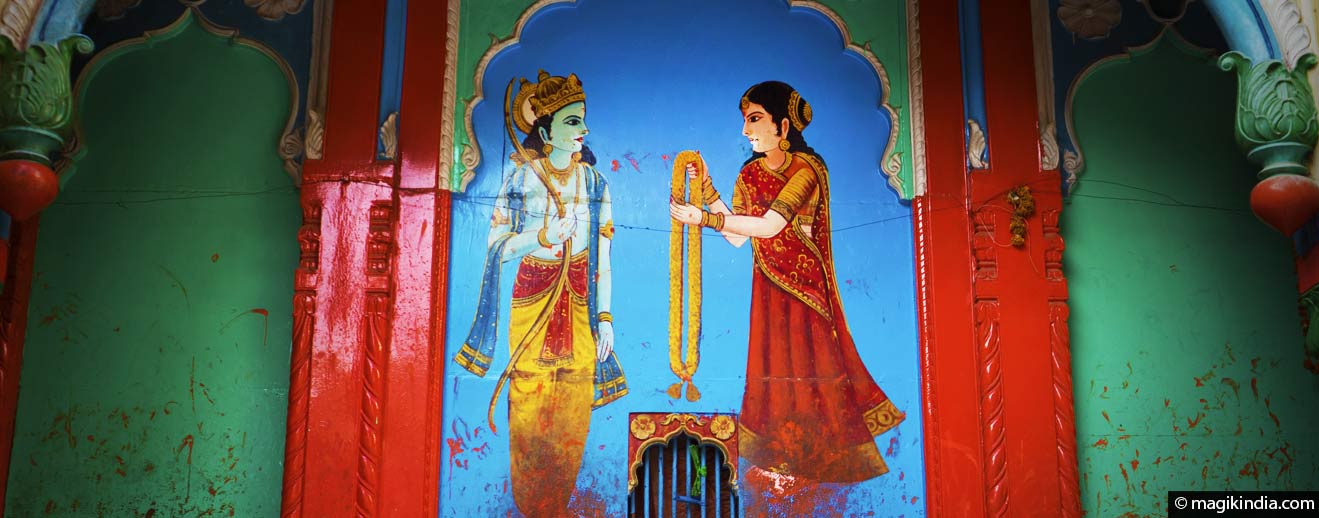
Ayodhya, the birth place of Lord Rama
Ayodhya, set on the banks of the Sarayu river, is a historical city: it is said to have been the capital of the Kosala Kingdom, which saw the birth of Lord Rama, the famous hero of the Ramayana epic. As such, it is considered by Hindus as one of the seven most sacred cities of India (Sapta Puri).
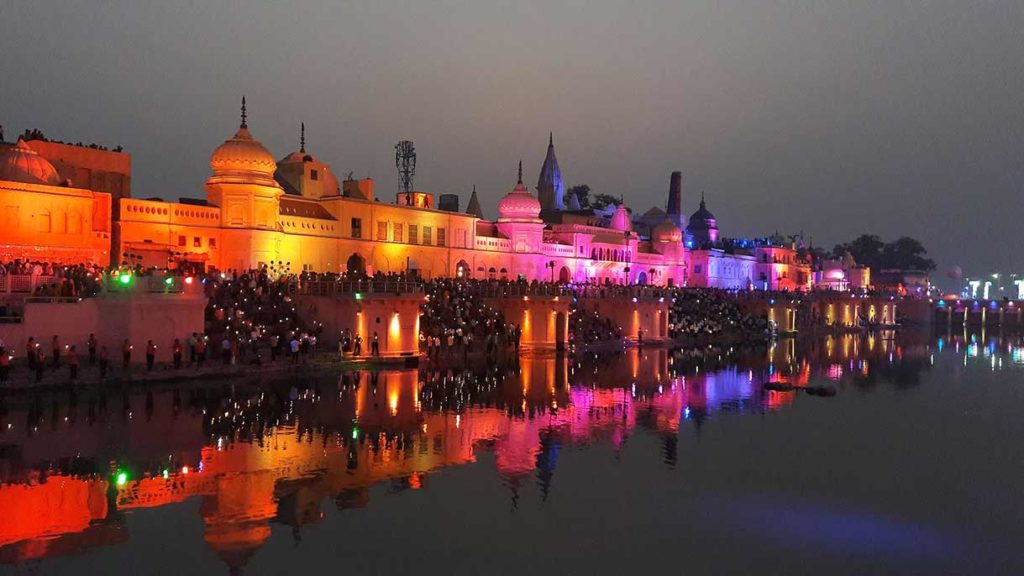
The new temple of Rama
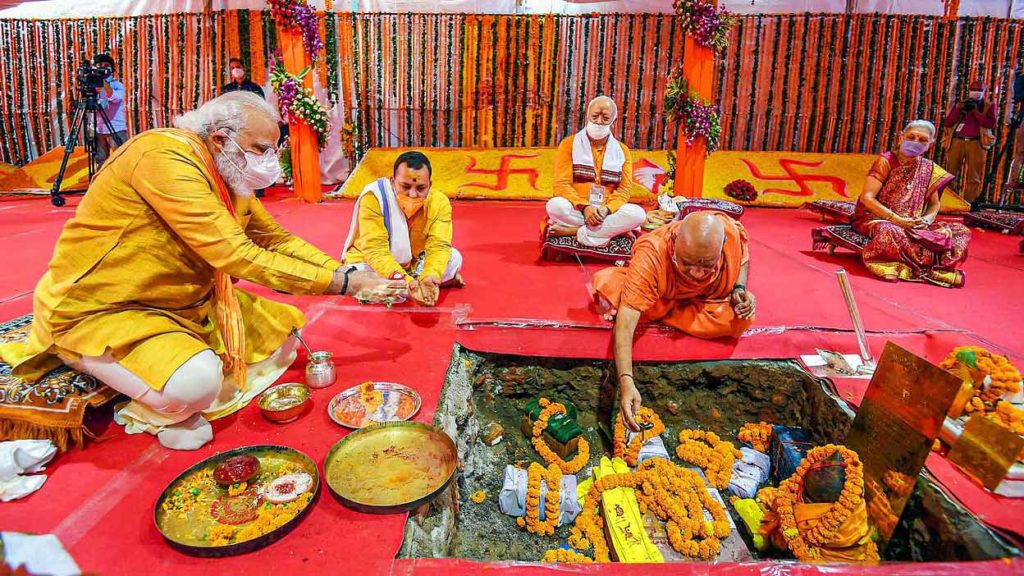
On August 5, 2020, the Prime Minister of India, Narendra Modi, placed a symbolic silver brick in the sanctum sanctorum of the future temple. For many Hindus, this was a historic event. The live broadcast of the ceremony was followed by more than 160 million viewers.
The new structure (more ambitious than the first project) will have three storeys. It will stand on a 49 meters long platform and adorned with several turrets, pillars and domes. According to the architects, it will take at least three years to be able to cross the door of this long awaited temple.
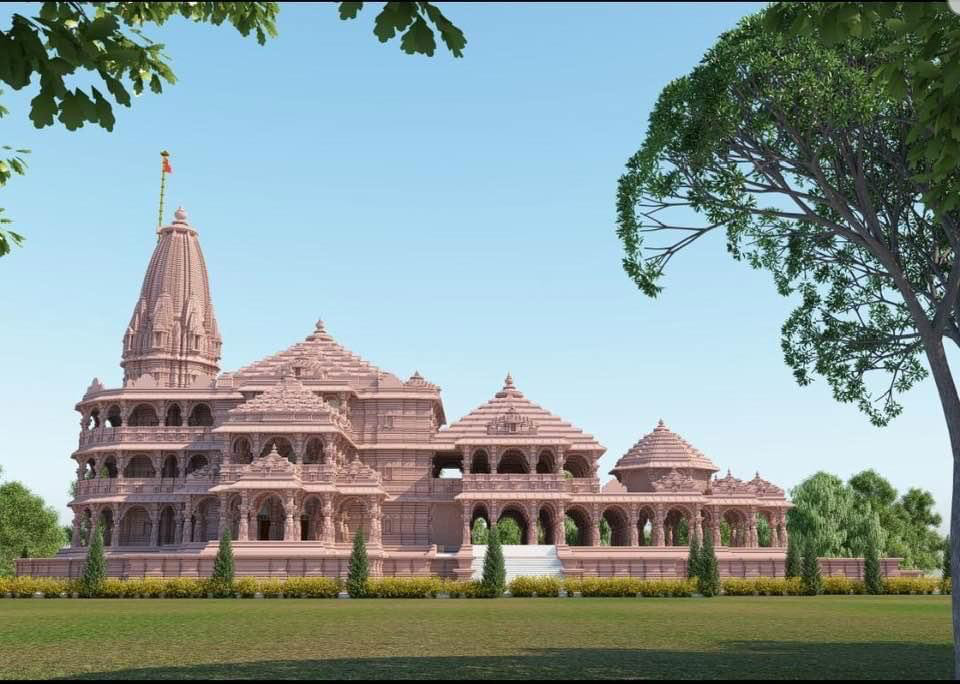
And now, let’s visit Ayodhya !
Ram Janmbhoomi or Ramkot
Ram Janmbhoomi is believed to be the place of birth of Lord Rama. Ramkot is located to the west of Ayodhya, where the fort of Rama was supposed to be built.
Rama, is one of the major deities of Hinduism. He is the seventh avatar or incarnation of the god Vishnu (the one who protects the universe). Rama was born on the ninth day of the lunar month Chaitra (March-April), a day celebrated throughout India under the name of ‘Ram Navami.’
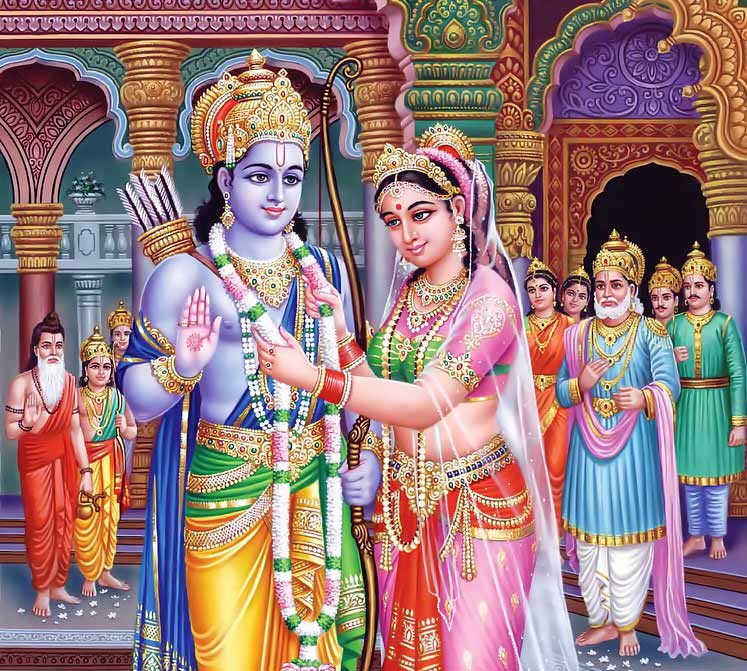
Until 2020, the Rama shrine was held in a rudimentary tent
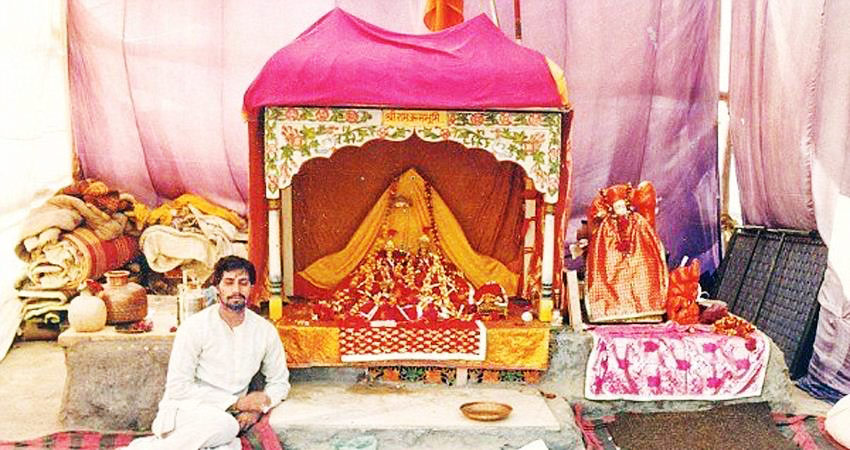
The small idol of Lala Rama (the Infant Rama) along with that of Sita and other deities are now placed in a wooden temple awaiting the grand final shrine.
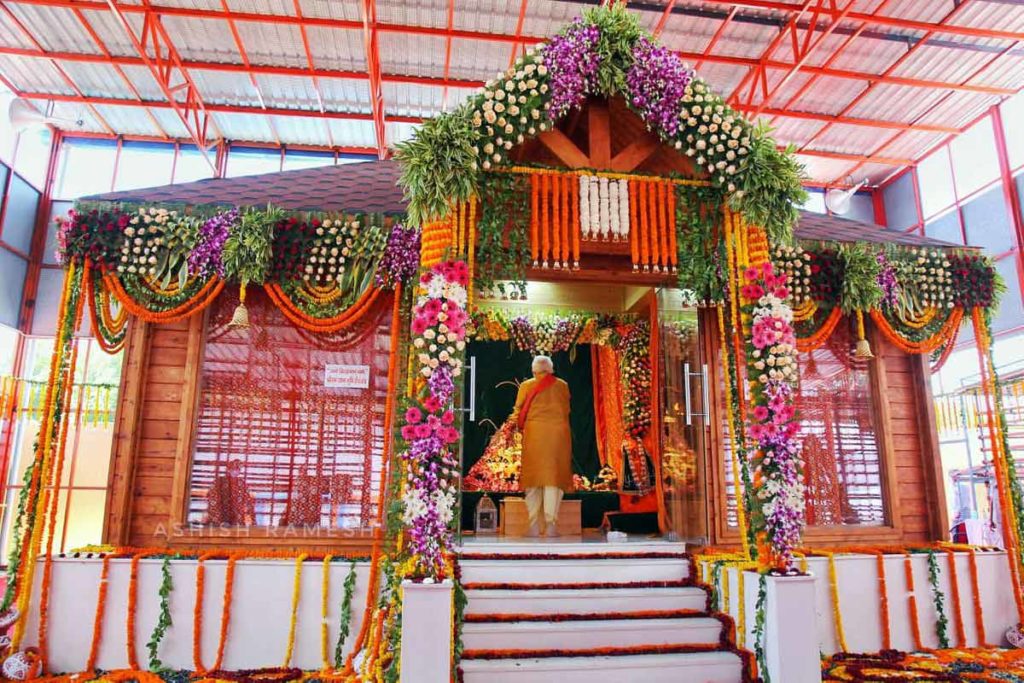
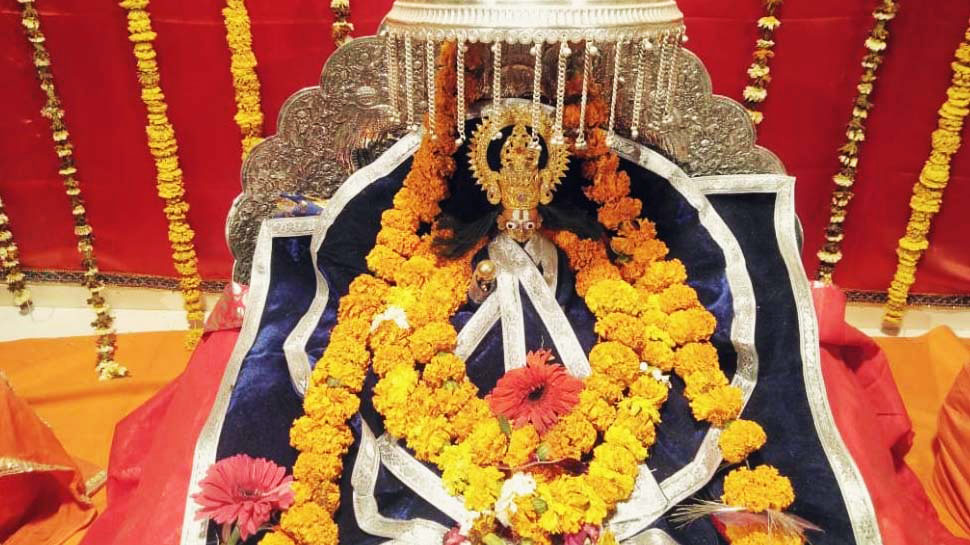
Hanuman Garhi temple
The Hindu temple of Garhi, dedicated to the monkey-god Hanuman, is nestled high in a citadel, a hundred steps leads us there. It is, along with Ramkot, the most venerated temple of Ayodhya and it is customary to visit this temple before that of Lord Rama.
The sanctuary was built by the Nawabs of Lucknow in the 10th century and even if you are not Hindu, the lively atmosphere and richly decorated architecture are truly worth a look.
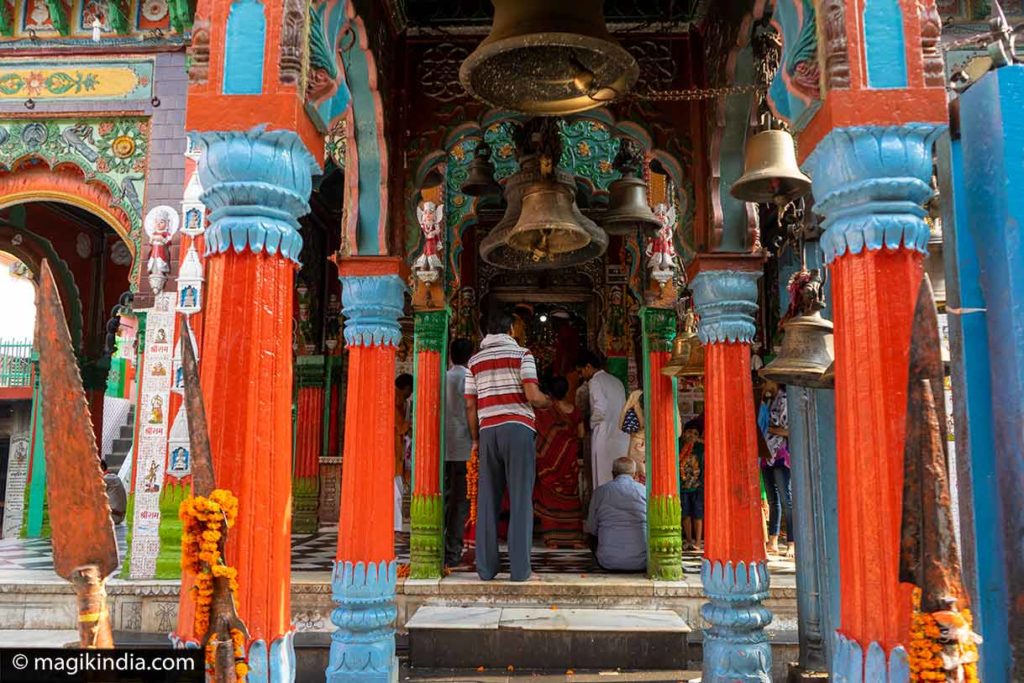
It is said that Hanuman lived here in a cave and protected the fort of Ramkot from there. The divinity of the temple is a ‘shila’, a large decorated stone, surrounded by different statues including that of Hanuman’s mother.
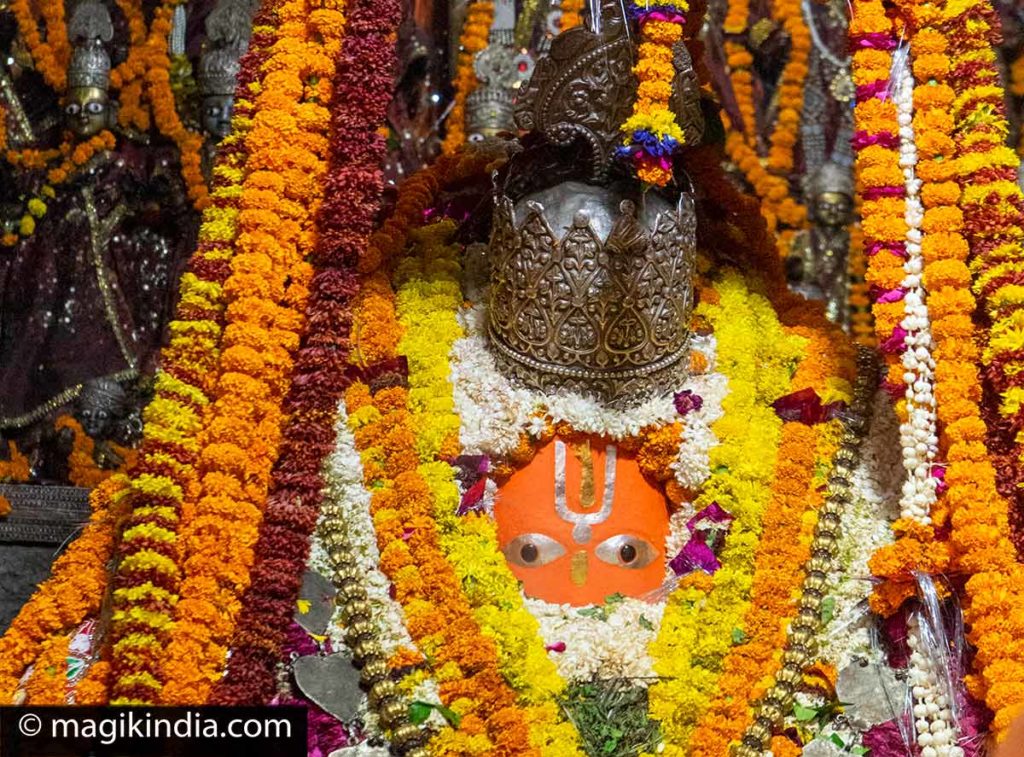
The faithful come with laddoos (a very popular sweet in India) in order that Hanuman bless them. They believe that praying the monkey-god will grant them luck and prosperity.
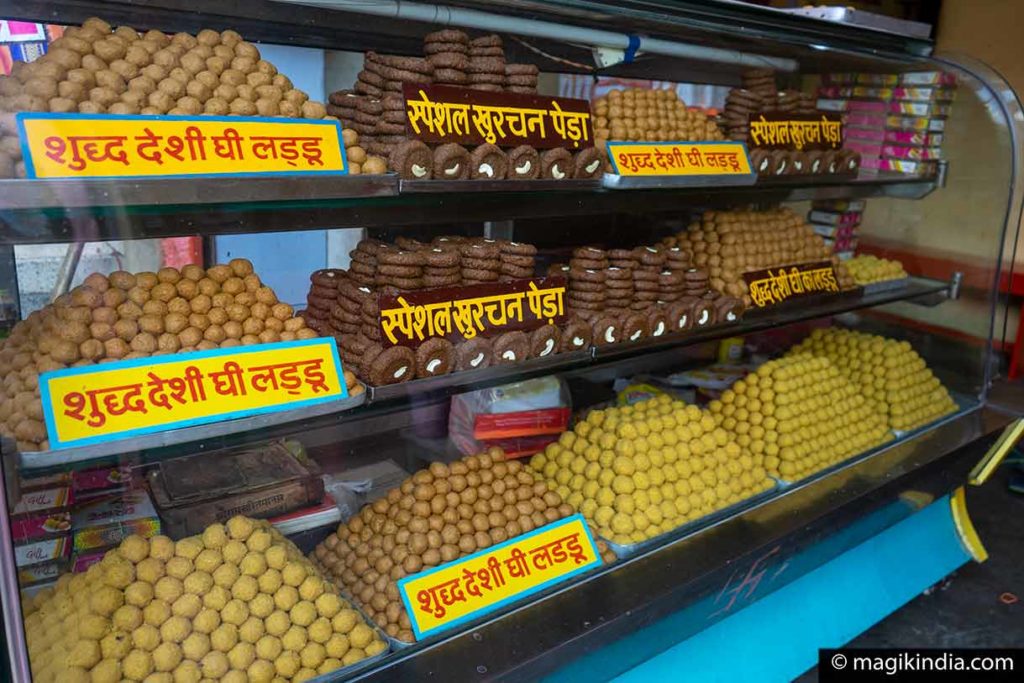
[ A short tour of the Hanuman Garhi temple ]
Kanak Bhawan or Sone-ka-Mandir
Kanak Bhawan is about 1000 meters from the Hanuman Garhi Temple. It is certainly one of the most beautiful temples of Ayodhya built in 1891 by Vrishbhanu Kuvari, the queen of Tikamgarh in the current state of Madhya Pradesh.
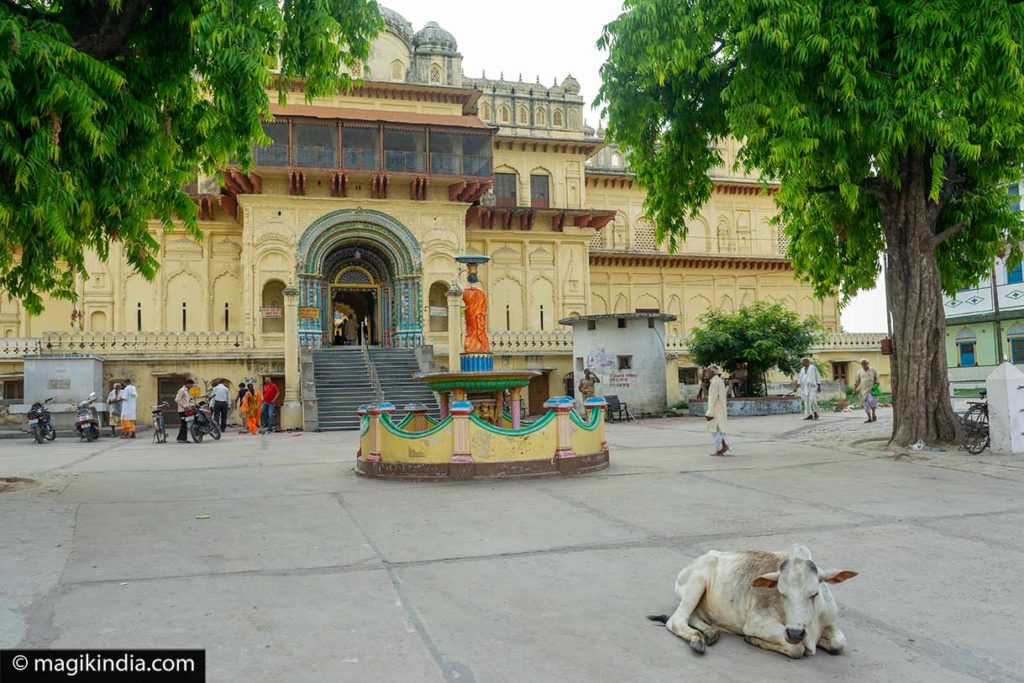
It is said that Mata Kakai (the Mother of Rama) gave this palace to Rama and his wife Sitha as a marriage gift. It is said that it was originally covered with gold, hence its name ‘Sone-ka-Mandir’ (‘Golden Temple’)
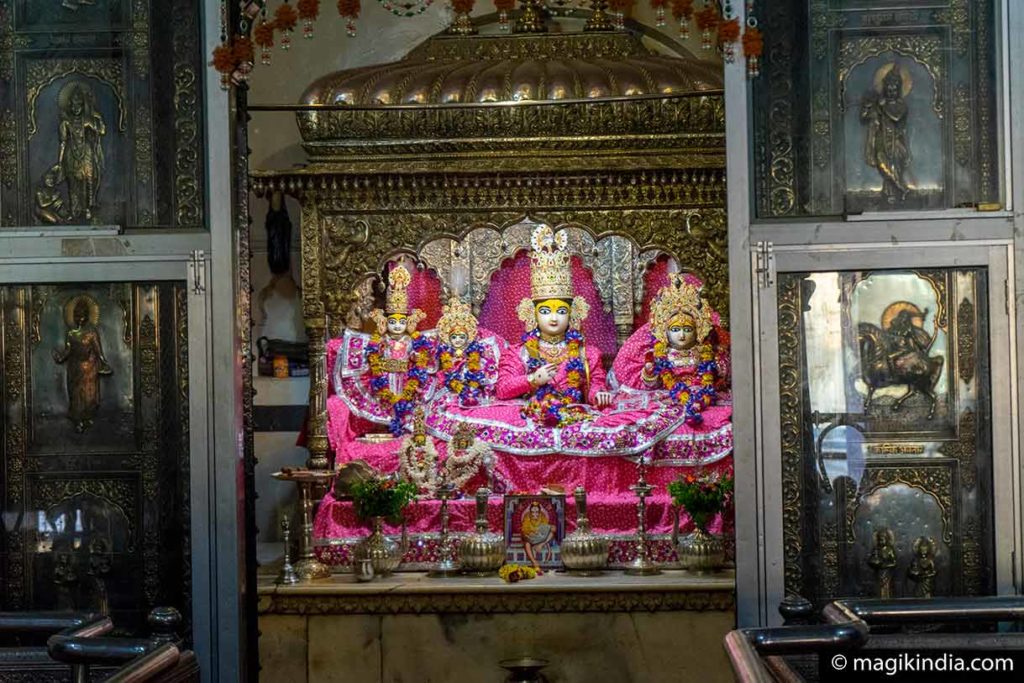
This peaceful temple with black and white tiles houses the idols of Sitha and Rama as well as his three brothers: Lakshmana, Bharata and Shatrughna.
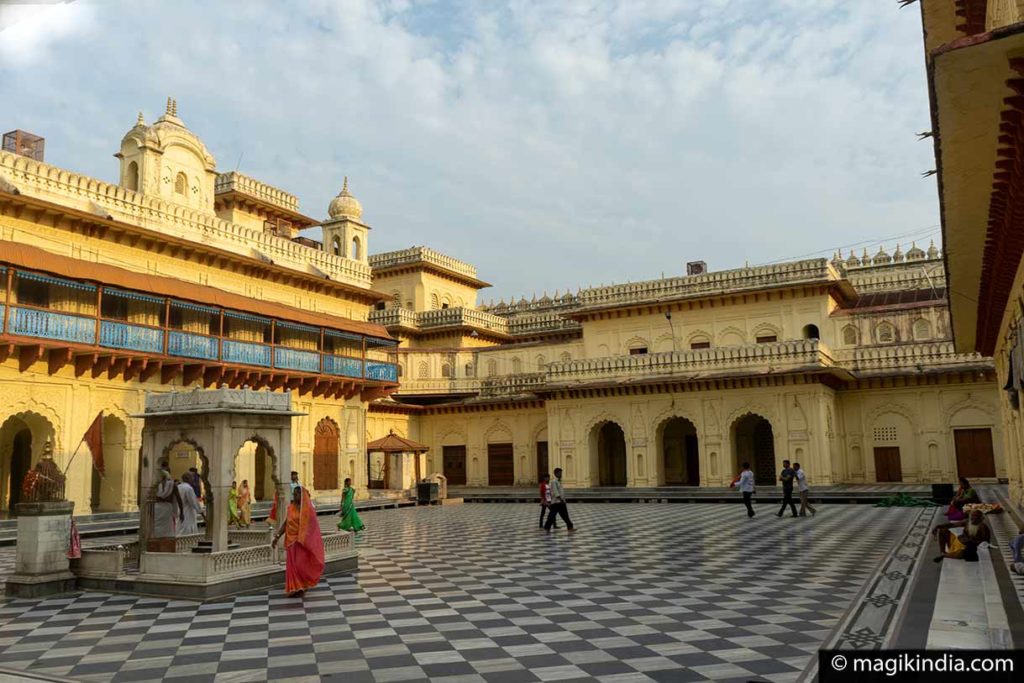
Ram Darbar

Rama Darbar is said to be the original palace of Rama but this is controversial subject. It contains a temple dedicated to Rama and his family.
The place serves free meals every day to the needy.

The priest of the temple, Ram Das, was fasting for more than 20 years; he only ate fruit and drink milk. It was a militant act for the rehabilitation of the Rama temple. His asceticism finally ended with the final verdict of the high court of justice.
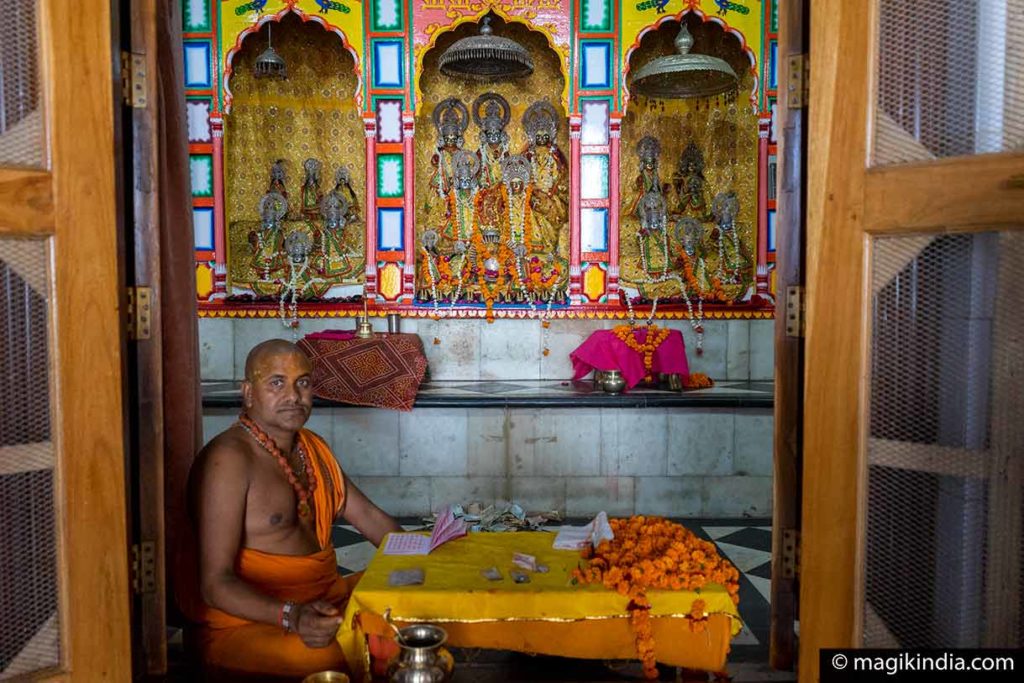
Sri Maniram Das Chavani (Valmiki bhawan)
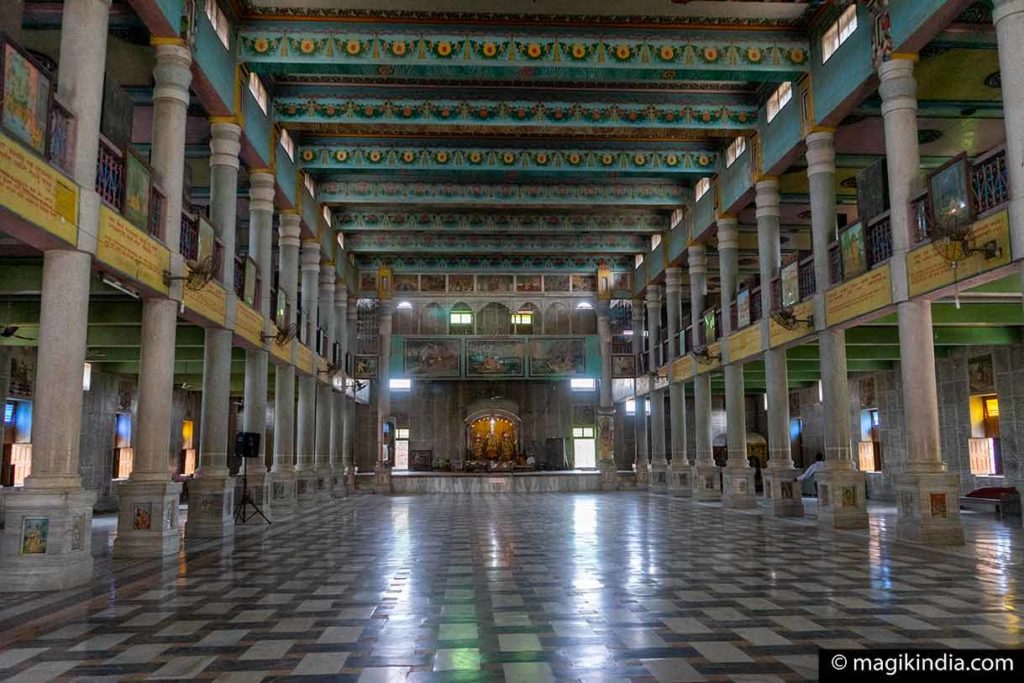
Sri Maniram Das Chavani is a temple dedicated to the memory of the author of the Ramayana, Valmiki. The entire epic of Lord Rama is inscribed on the walls of the immense hall of the temple.
At the other end of the hall, opposite the entrance, the idols of Lav and Kush, the two sons of Rama and Sitha, surround that of their adoptive father and instructor, Valmiki.
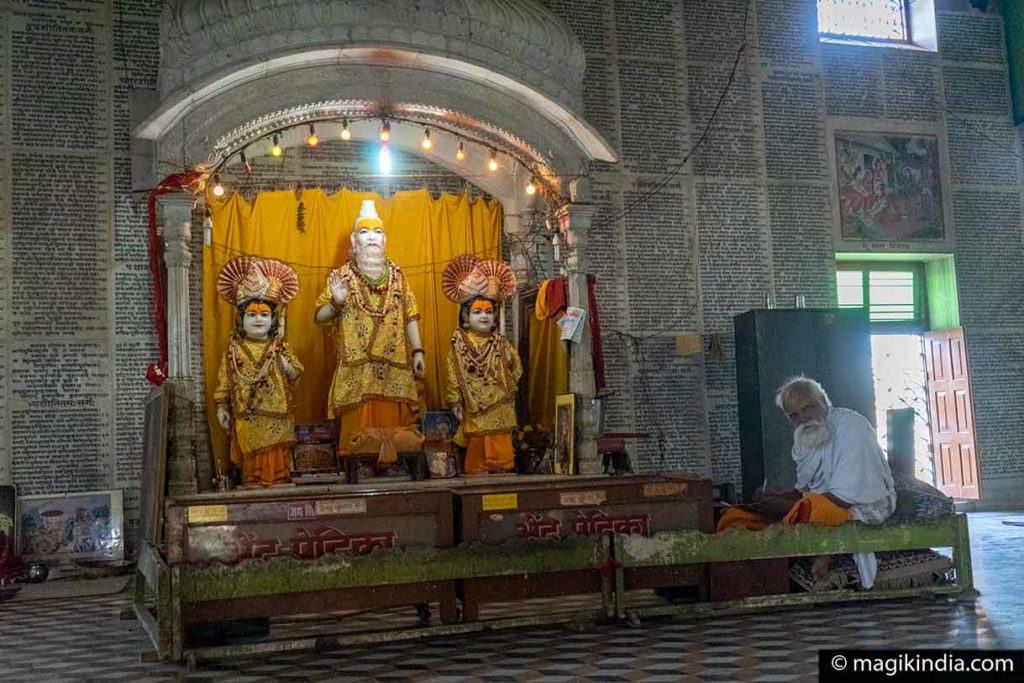
Sarayu river | Naya ghats | Ram ki Pairi
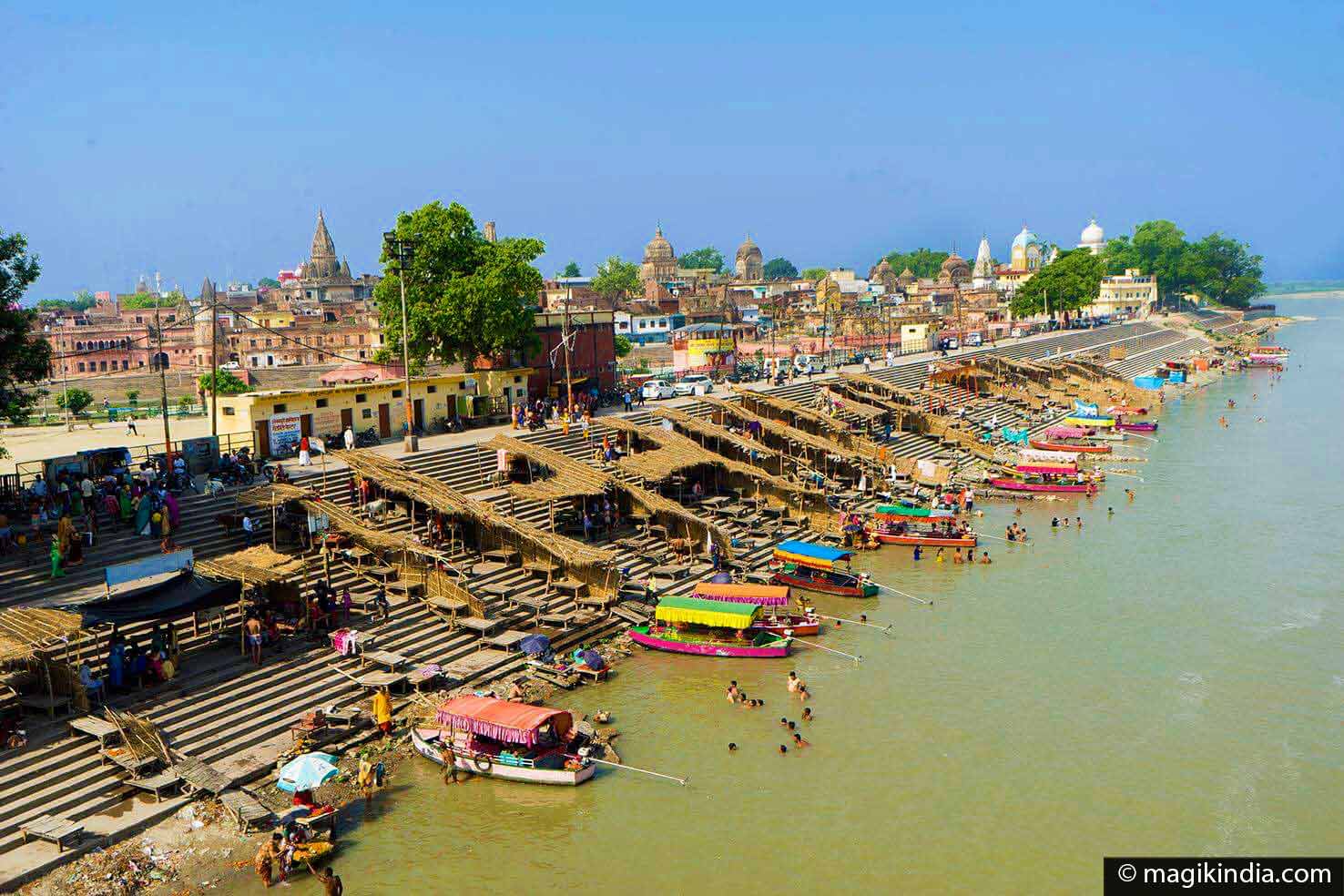
In India, a high place of pilgrimage is never far from a sacred river and vis-versa. This is the case of Ayodhya. The river Sarayu flows north of the city and the Hindus gather on its banks (Naya ghats) to make their ablutions and ritual offerings.
In the evening, around 7 am, an arati (flame offering) is made to thanks the river for its benefits.
[ Arati to the river Sarayu ]
Right next door are the Ram Ki Pairi’s ghats* surrounded by old temples and gardens which, by the way, were very poorly maintained.
* The ghats are the steps leading to the river
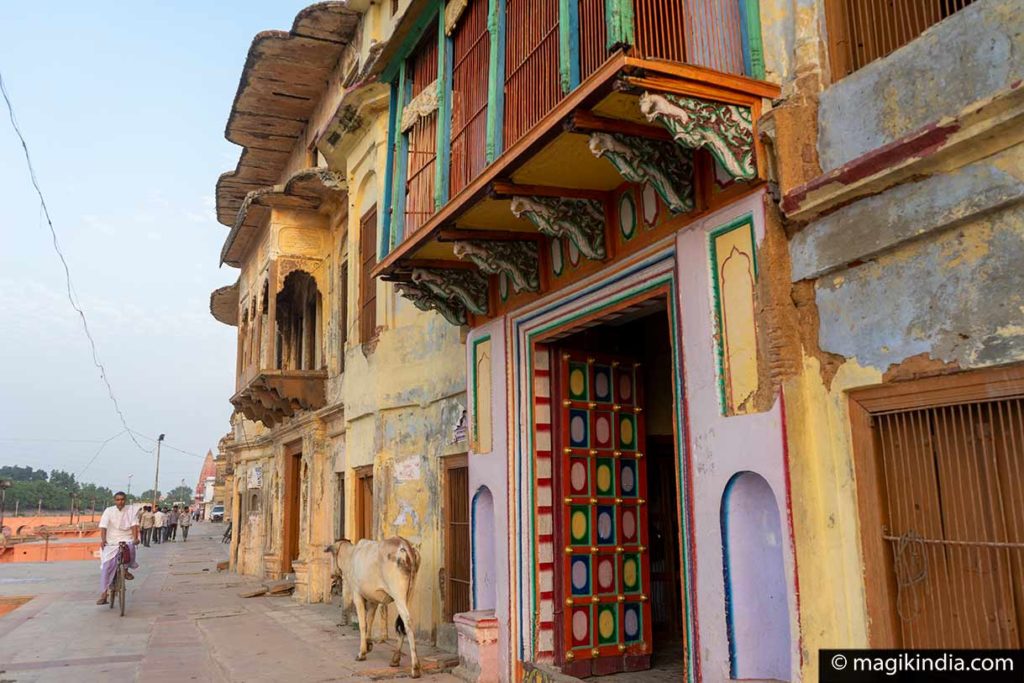
The 25 ghats were rebuilt in 1985 to accommodate the thousands of pilgrims who assembled during the great religious festivals. The water in the Ram Ki Pairi basins is pumped directly from the Sarayu River.
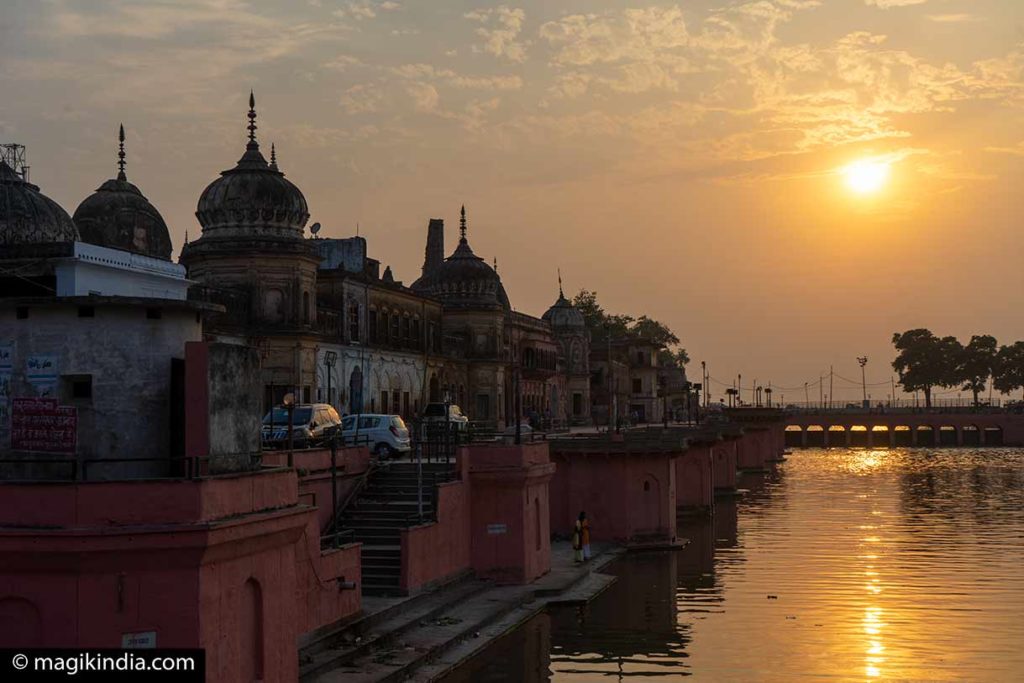
Nageshwarnath temple
Located just next to the ‘Naya Ghats’, the temple of Nageshwarnath dedicated to the god Shiva is one of the oldest in Ayodhya; the faithful go there after the evening arati to the river Sarayu (see above).
Legend has it that the temple of Nageshwarnath was built by Kush, one of the sons of Lord Rama. Kush had lost his armband bracelet while bathing in the Sarayu River. It was picked up by a Nag-Kanya (female snake guardian of the earth) who fell in love with him. As she was a fervent devotee of Shiva, Kush erected this temple for her. The current temple was built in 1750 and houses a lingam, symbol of the god Shiva.
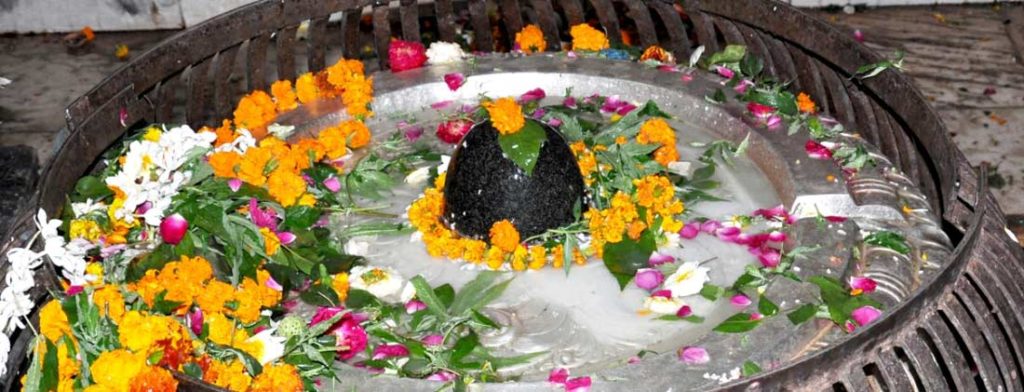
It is said that it was with this temple that the legendary king Vikramaditya (1st century BC) was able to locate Ayodhya and the sites of the various sanctuaries. The city had fallen into ruin and was covered with dense forests. Further excavations in the 19th and 20th centuries helped to locate the exact location of Ayodhya, although this location is still not accepted unanimously.
Devotion is at its maximum in this temple during the festival of Mahashivaratri (February-March), which is celebrated with great pomp.
Tulsi Smarak Bhawan
Located near the national road, Tulsi Smarak Bhawan is a complex built in 1969 in tribute to Goswami Tulsida. Goswami Tulsidas is an Indian poet and philosopher, best known for his version of the Ramayana, the Ramcharitmanas.
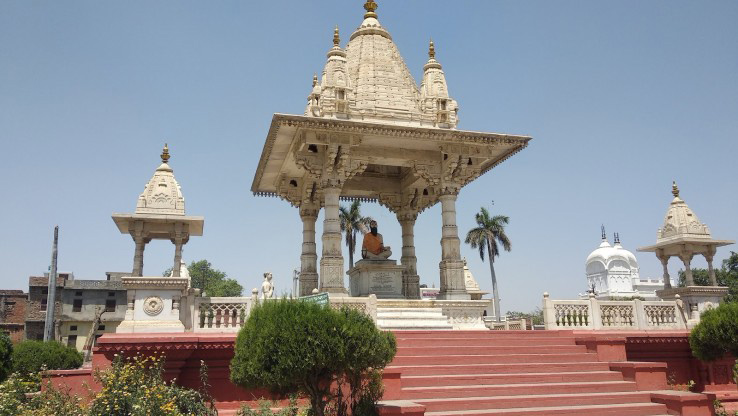
There is a research institute (Ayodhya Shodh Sansthan) with an extensive library of Hindi books and literary compositions on Goswami Tulsidas.
Cultural programs are held every day from 18:00 to 21:00 at the Tulsi Smarak auditorium; the main attraction is the ‘Ram Lila’, a play about the life of the god Rama.
Other activities such as prayer, religious discussions, devotional songs (bhajans and kirtans) are also organized.
Chakravarti Mahraj Dashrath Palace

This colorful edifice is said to be the palace in which King Dasharatha resided with his family.
Dasharatha descended from the Suryavamsa dynasty (sun dynasty) and was the king of Ayodhya and the father of Rama as mentioned in the Hindu epic, the Ramayana.
The place now houses a temple, with the idols of Sitha, Rama and his brothers Lakshmana, Bharat and Shatrughan.

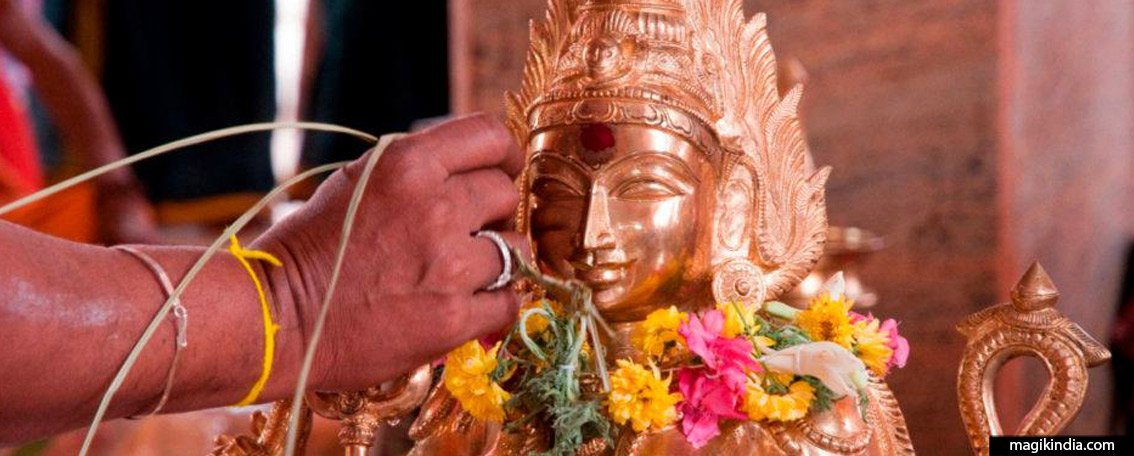
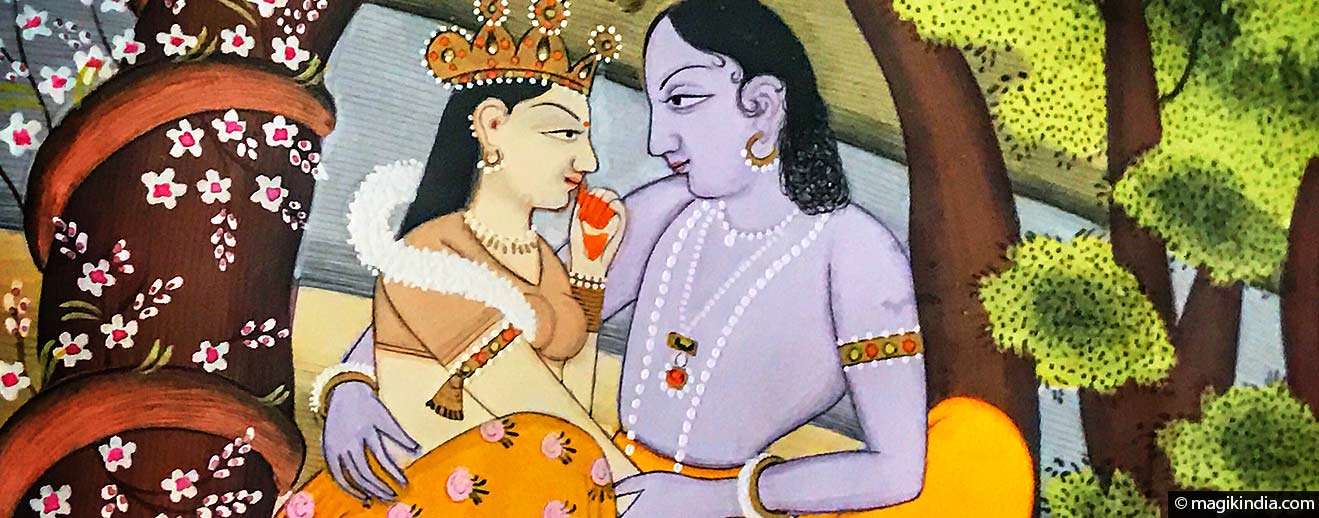
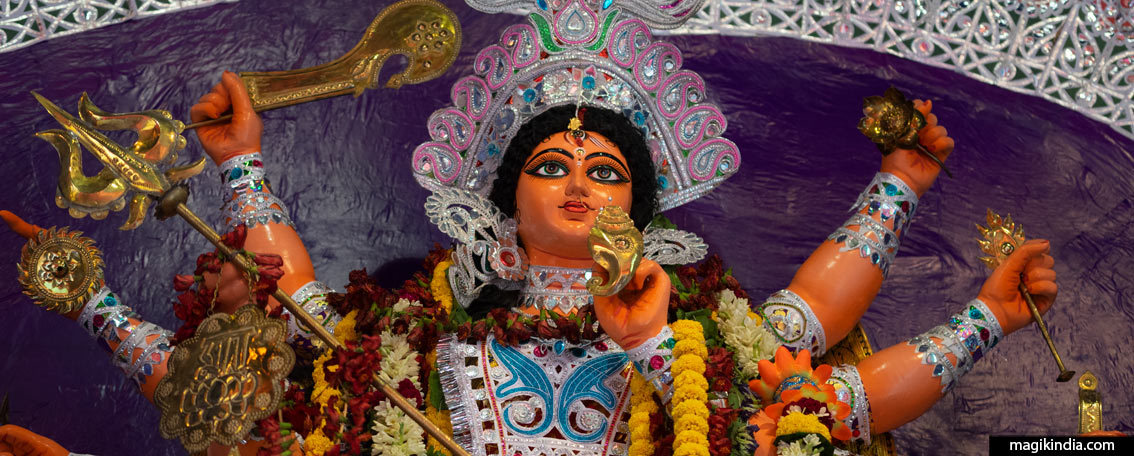
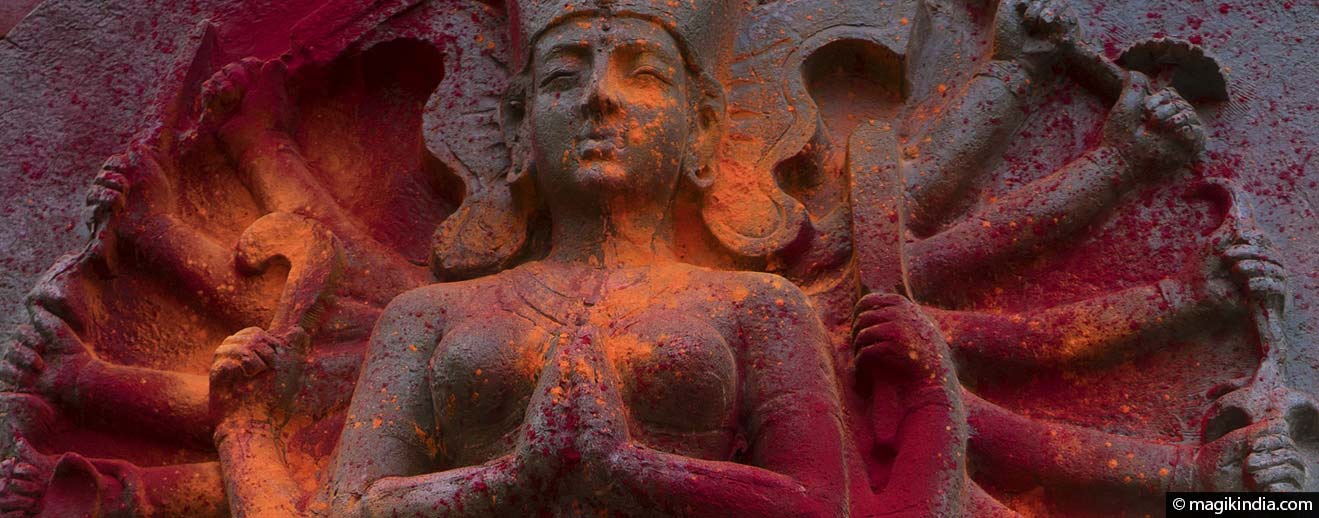


Well, that’s your point of you 🙂 Jai Sri Ram!
Jai Sri Ram!
i am from ayodhya a nice city
jambhoomi of ram
Jai Sri Ram!
Jai Shree Ram
Jai Sri Ram !
Wonderful post. This blog has an amazing information about the destination places beautiful visiting spots and captures very impressive photos.
Thanks Bharat
hi there I really hope you will help me. I want to study and acquire knowledge regarding mythology and history related to uttar pradesh . I don’t know from where to begin. I’ll be really greatful to you if you help me out and guide me.
Hi dear Suresh, Thanks for you message. Actually I have no tips to give you, maybe try the Madhya Pradesh officila website http://www.mptourism.com and try to contact someone from there.
Regards
Mathini